Showing 1–20 of 32 results
-

Calendula
$6.50Add to cartCalendula (Calendula officinalis) is an annual herb in the Asteraceae family. It prefers full sun to part shade and well-drained, moderately fertile soil, and in New Zealand it is hardy across most regions, self-seeding freely. Growing 30–60 cm tall and 25–40 cm wide, it has bright orange to golden daisy-like flowers. Used as a medicinal herb for its healing, anti-inflammatory blooms, a culinary herb with edible petals, a cottage garden favourite for colour and charm, and a pollinator plant attracting bees and beneficial insects.
-
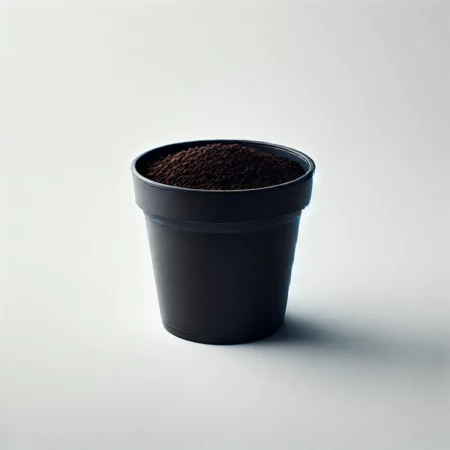
Calendula – Mix : seeds
$4.25Add to cartCalendula is a popular flowering ANNUAL that grows to 60cm with oblong-lanceolate leaves and single flowerheads of bright orange or yellow. Flowers are pollinated by bees and it is a well-known companion plant. Calendula prefers any well drained soil but can grow in very poor soils and can tolerate very acidic or very alkaline soils. It can grow in semi shade but grows best in full sun. The plant can flower nearly year-round in favourable conditions, and the flower petals are edible and medicinal.
-
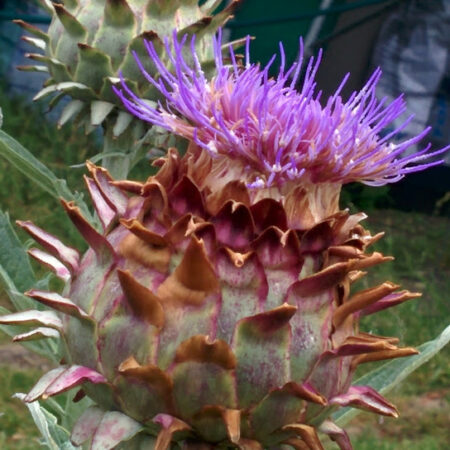
Cardoon
$10.50Add to cartCardoon (Cynara cardunculus) is a perennial in the daisy family (Asteraceae). It prefers full sun and well-drained, fertile soil, and is moderately frost-hardy in most of New Zealand. Growing 1.5–2 m tall and 1 m wide, it features striking silver-grey leaves and tall stalks of purple thistle-like flowers. Mainly valued as a culinary plant for its blanched stems with a mild artichoke flavour, a cottage garden ornamental for bold, architectural form, a pollinator plant attracting bees, and a medicinal herb supporting healthy digestion and liver function.
-
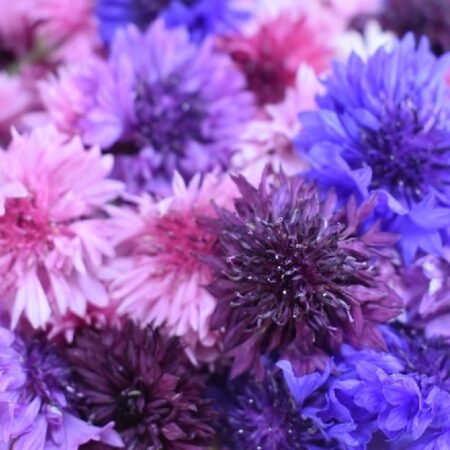
Cornflower – Mix : seeds
$4.25Add to cartAn ANNUAL growing to 1m with grey-green branched stems and 1-4cm lanceolate leaves. Flowerheads are commonly in an intense blue, but with white, pink, purple and even dark, almost black varieties existing. Flowers are known to attract bees and other pollinating insects. Prefers well-drained soil and can grow in nutritionally poor, alkaline soils. Full sun position is best and tolerates some degree of drought.
Shoots and flowers are edible and it has a long history of use as a medicine, although rarely used today.
-
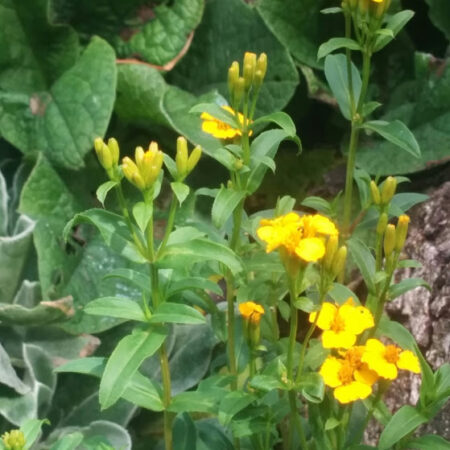
Marigold – Texan Tarragon
$7.50Add to cartMexican Tarragon is a PERENNIAL growing to 80cm with an upright to bushy habit with many unbranching stems. Leaves are linear, shiny green and anise-tarragon scented.
Clusters of small golden yellow flower heads on the ends of the stems appear in late summer.
Prefers moist, well-drained soil in full sun. Can grow in heavy clay soil. -
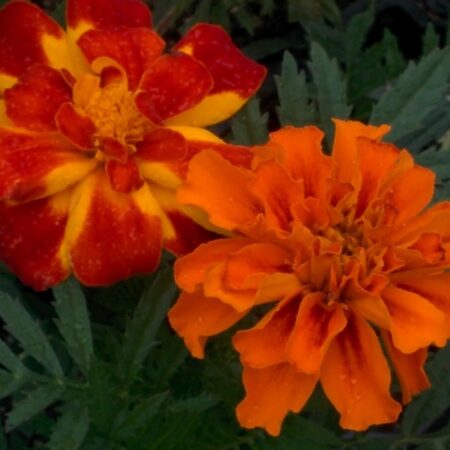
Marigold Mixed French : seeds
$4.25Add to cartA flowering ANNUAL growing to 50cm (T. patula). Most species have pinnate green leaves and bright blooms in golden, orange, yellow, and white colors, often with maroon highlights.
It prefers well-drained soil in a full sun position, and is tolerant of heavy clay soil.
Commonly grown as a companion plant in the vegetable garden, or a bright and cheery flower in the ornamental garden, marigolds are edible and some have medicinal qualities too.
-
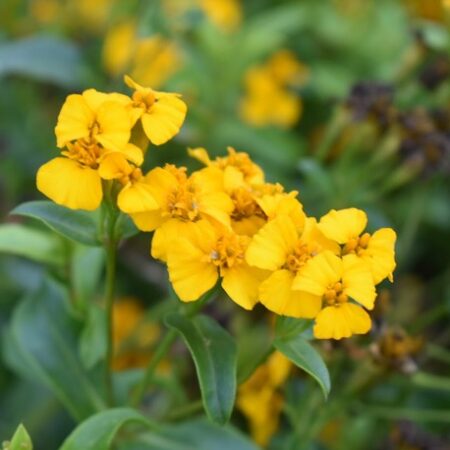
Marigold Texas Tarragon : seeds
$4.25Add to cartMexican Tarragon is a PERENNIAL growing to 80cm with an upright to bushy habit with many unbranching stems. Leaves are linear, shiny green and anise-tarragon scented.
Clusters of small golden yellow flower heads on the ends of the stems appear in late summer.
Prefers moist, well-drained soil in full sun. Can grow in heavy clay soil.
-
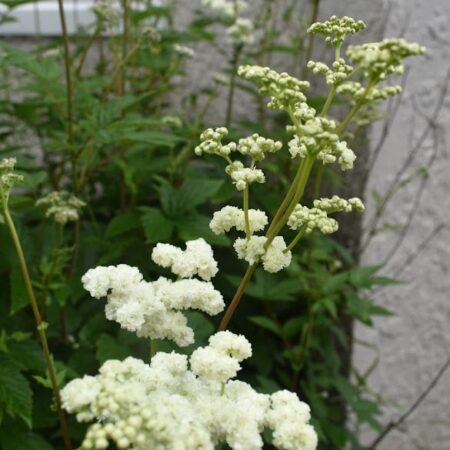
Meadowsweet – Flore Pleno
$12.50Add to cartA PERENNIAL growing to 1.2m.
Prefers moist or wet soil and can grow in heavy clay soils. Full sun or semi-shade.
Flowers, leaves and root are edible and it has a long history of medicinal uses. Double flowering variety.
-
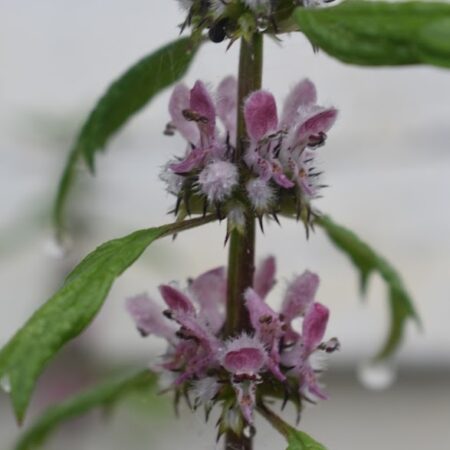
Motherwort
$8.50Add to cartA PERENNIAL growing to 1m with a purplish squarish stem clad in short hairs, and opposite leaves that have serrated margins and are palmately lobed.
Prefers any moist soil in semi-shade or full sun, and can grow in nutritionally poor soil.
Flowers can be eaten fresh or dried and the leaves and flowering tops are prepared as a herbal medicine.
-

Orach – Red : seeds
$4.50Add to cartAn ANNUAL growing to 1.8m, red mountain spinach has attractive purple lance-shaped leaves. Prefers well-drained moist soil in the full sun. It can grow in very alkaline and saline soils.
Leaves are eaten raw or cooked as a spinach and it has been used as a folk remedy. -

Santolina
$8.50Add to cartAn herbaceous perennial, this small evergreen shrub is best suited to a hot and dry environment and grows best in full sun. Grey-green leaves form attractive mounds and are topped with yellow button flowers in summer.
-
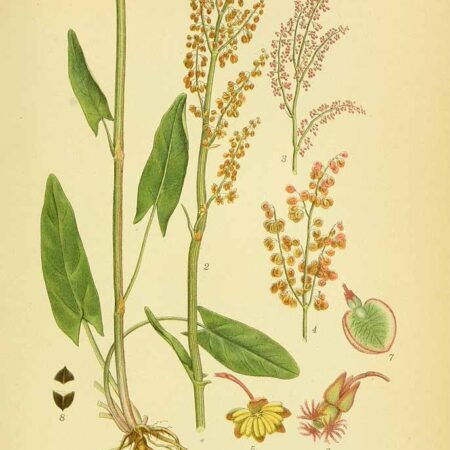
Sorrel – Garden
$8.50Add to cartSorrel is a PERENNIAL plant growing to 60cm with deep roots, juicy stems and edible, arrow-shaped leaves that taste sour.
Prefers moist soil in a semi-shade to full sun position. Can tolerate acidic soil.
All parts of the plant are edible. It is a good household and dye plant and has medicinal use. -
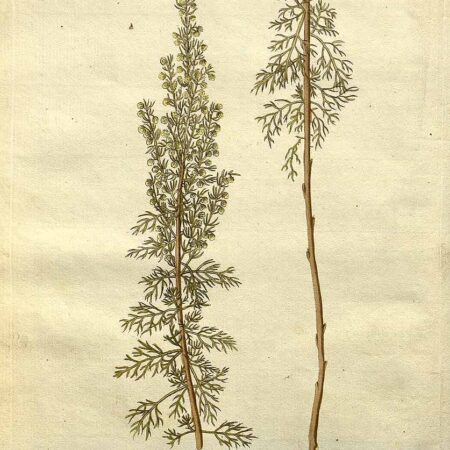
Southernwood
$9.50Add to cartThe small bushy DECIDUOUS SHRUB grows to 1.2m and has small grey-green narrow and feathery leaves and small yellow flowers.
It has a strong camphor-like fragrance.
Prefers well-drained soil in a full sun or semi-shade position and can grow in nutritionally poor soil. Drought resistant.
It is used in small quantities as a flavouring, but is mostly used as a medicinal herb. -

Coreopsis – Plains
$6.50Read moreCoreopsis is a flowering ANNUAL growing growing up to 1m. The abundant mahogony coloured flowers are noted for attracting pollinating insects. Coreopsis prefers a well drained soil in full sun, but it can tolerate some drought when well established. Self-seeds freely. Altough it is generally grown as an ornamental plant or dye herb, a tea can be made from the whole plant. It has some historic medicinal use.
-
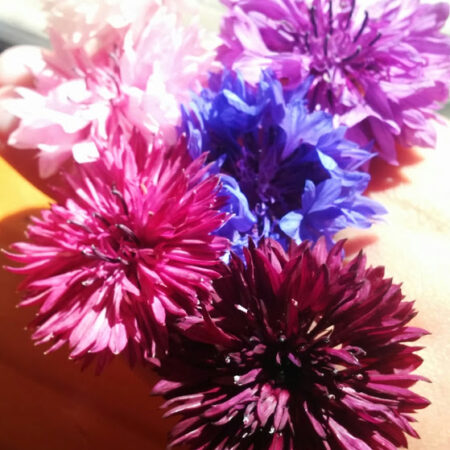
Cornflower
$6.50Read moreAn ANNUAL growing to 1m with grey-green branched stems and 1-4cm lanceolate leaves. Flowerheads are commonly in an intense blue, but with white, pink, purple and even dark, almost black varieties existing. Flowers are known to attract bees and other pollinating insects. Prefers well-drained soil and can grow in nutritionally poor, alkaline soils. Full sun position is best and tolerates some degree of drought.
Shoots and flowers are edible and it has a long history of use as a medicine, although rarely used today. -
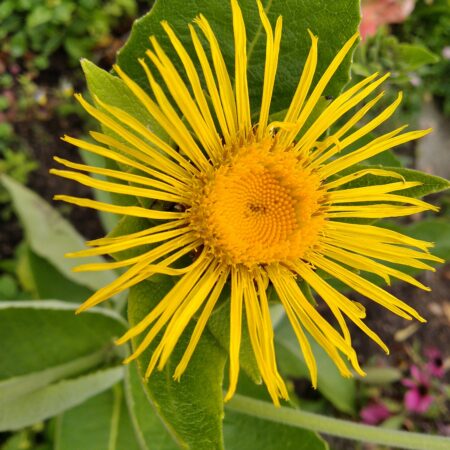
Elecampane
$9.50Read moreA flowering PERENNIAL plant growing to 1.5m. A rigid stem carries large and toothed leaves thickly woolly on the underside. Yellow flowerheads are up to 5 cm broad. The root is thick, branching and mucilaginous. It grows in almost any moist soil in the full sun or semi-shade.
The leaves somewhat bitter but aromatic and edible. Roots are candied. Used as a warming and tonic herb, it is a well used medicinal herb. -
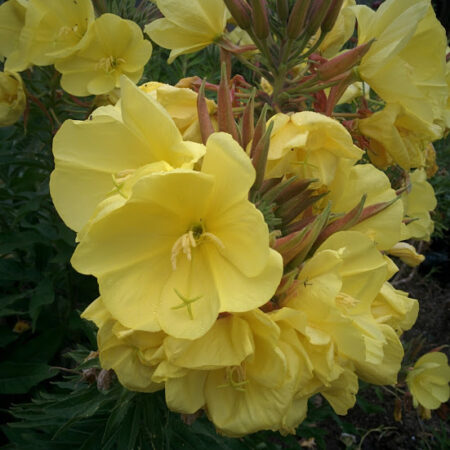
Evening Primrose – Standard Yellow
$7.50Read moreA hardy flowering BIENNIAL growing to 1.2m. Basal rosettes spiral up to flowering stems with butter-yellow flowers that are noted for attracting bees and butterflies. Prefers well-drained soil in a full sun position, and can grow in nutritionally poor soil.
Flowers, leaves, oil, root and seedpods are noted as edible. Many medicinal applications, particularly seed oil.
-

Fuller’s Teasel
$8.50Read moreA BIENNIAL/PERENNIAL growing to 1.8m with prickly stem and leaves and purple, dark pink or lavender inflorescence.
Grows well in almost any soil and can tolerate heavy clay soil. Prefers moist soil in a full sun position.
With some use as a herbal remedy, the plant is better known for the dried flower heads being used for carding wool and as a clothes brush for raising nap on woollen cloth. -
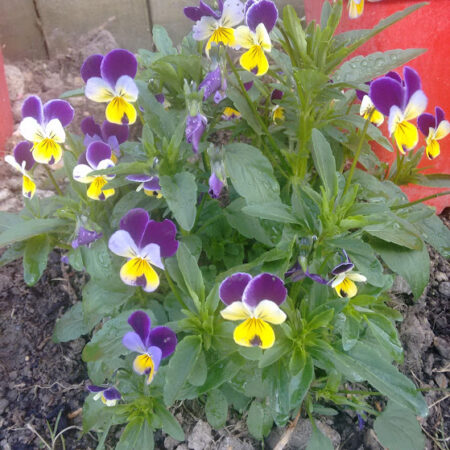
Heartsease
$6.50Read moreAn ANNUAL, or short-lived PERENNIAL, growing to 20cm. The small plant has a creeping and ramping habit with oval to heart-shaped leaves and distinct 5-petalled (2 upwards, 2 to the sides and 1 large to the bottom) purple, blue, yellow or white (or a combination of) flowers.
Noted for attracting wildlife, it prefers well-drained soil in a full sun position, but tolerates semi-shade well.
Flowers and leaves are edible and it has a long history as a medicinal plant. -

Hollyhock – Charters Double Salmon
$7.50Read moreA flowering PERENNIAL, often grown as a BIENNIAL, in the mallow family, that can grow to over 2.4m in height. The plants have an erect, unbranched habit with large lobed or toothed leaf blades and very tall flower spikes bearing many attractive single flowers in white to off-white colour.
The plant does well in almost any well-drained soil in a full sun position, and can grow in semi-shade. Tall flower spikes may need staking.
The flowers, leaves, root and stem are edible and it has a long history of medicinal use.
